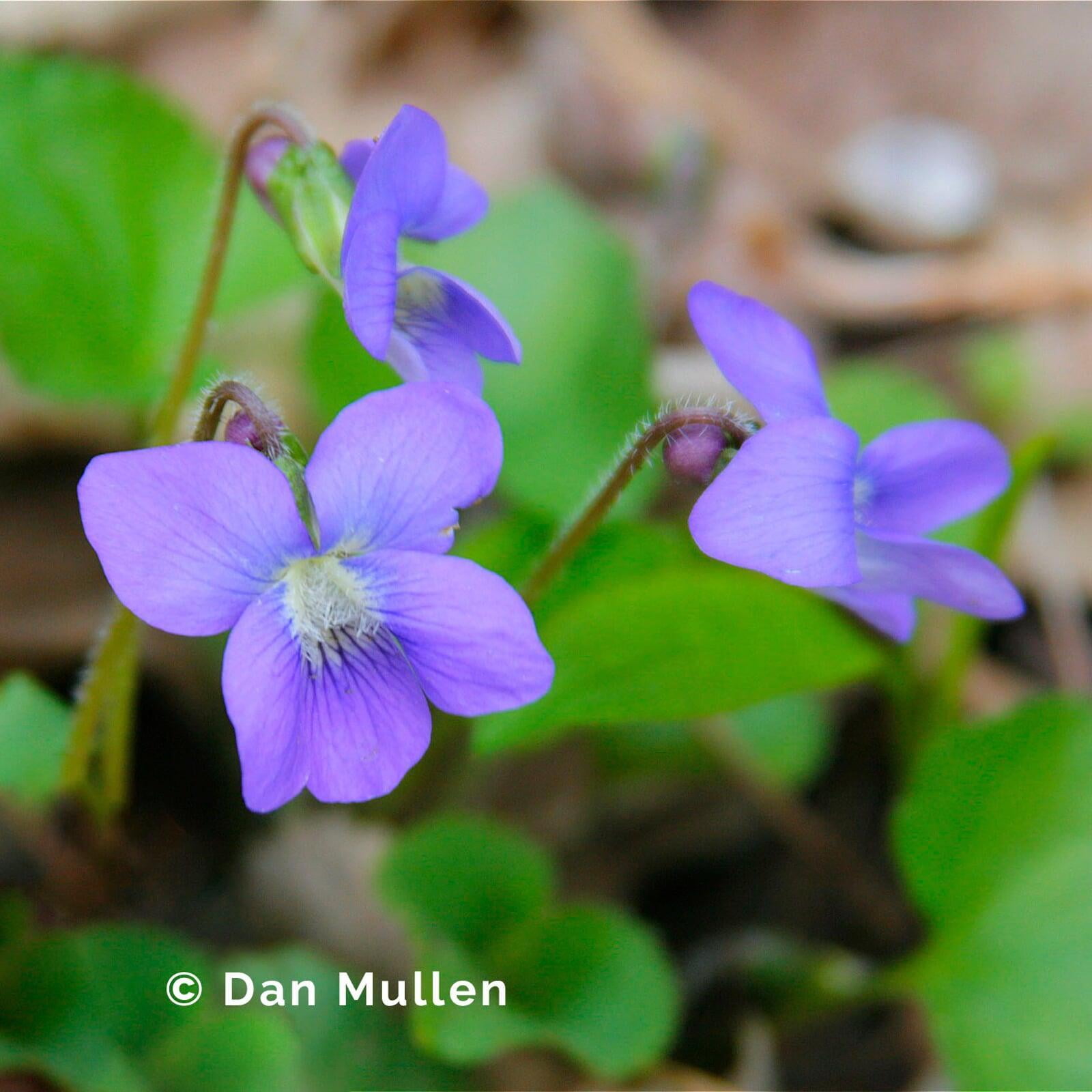Viola cucullata
Blue marsh violet Description:
Viola cucullata, commonly known as marsh blue violet, is a herbaceous perennial plant that is native to eastern North America. It can be found in wetlands, along streambanks, and in other moist habitats in the eastern part of the United States and Canada.
Marsh blue violet typically grows 4 to 6 inches tall and has a spreading habit. It has heart-shaped leaves that are arranged alternately on the stem. In mid-spring to early summer, the plant produces small, blue-purple flowers that are highly attractive to pollinators such as bees and butterflies.
Viola cucullata is an excellent plant for naturalizing in a wetland garden or shade garden, and it is highly valued for its ornamental properties. It prefers a moist to wet soil in partial to full shade and can be used as a groundcover, edging, or as a specimen plant. The plant is deer-resistant and can be easily grown from seed or transplants. The attractive flowers and foliage make it a beautiful addition to any garden or landscape, and the early blooming period makes it a great option for early season interest. It is also a great choice for attracting beneficial insects to the garden.
Native Range:
Blue marsh violet extends from Minnesota on its Western edge to the East coast. In Minnesota, Blue marsh violet is found mostly on the state's Eastern regions.
Standard Plant Information:
Plant Height: 4" - 6" inches
Bloom Time: April - June
Preferred Habitat: Does well in part shade to full sun in moist to wet soil. Often found in swamps, bogs, floodplains, seeps, woods, stream banks, river banks, and rock crevices.
Sowing:
For most homeowners, the best option is to scatter seed on the ground by hand broadcasting at a minimum of 16-64 pls ounces per acre. For even coverage, we recommend that you broadcast seed in perpendicular rows across the site to ensure even coverage.
You’ll want to broadcast any grass seed first, which will get raked into the soil lightly. Next, it is ideal to mulch the area lightly with either a clean (no seed) straw or preferably with our native Little Bluestem straw, sold at our retail garden centers. After a light mulching is complete, now it’s time to broadcast your native wildflower seeds, which should not be raked into the soil. A good rain or watering is sufficient to cover the seed.
Planting:
Simply dig a hole in the soil slightly larger than the plant’s roots. Ensure that the soil line of the plant is maintained during the transfer (i.e. the plant should be at the same level with the ground as it was in the pot). Pack any loose dirt back around the plant and make sure you water it well the same day to ensure it has the best chance of survival.









